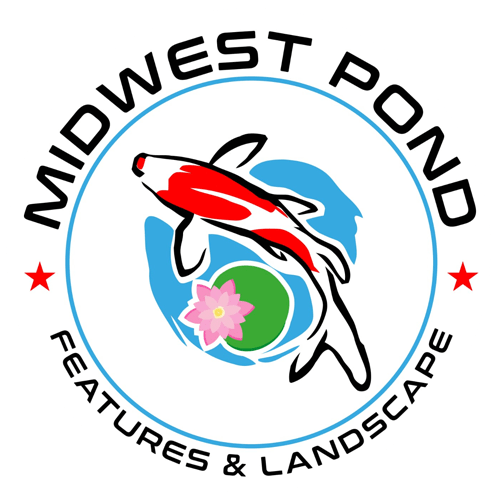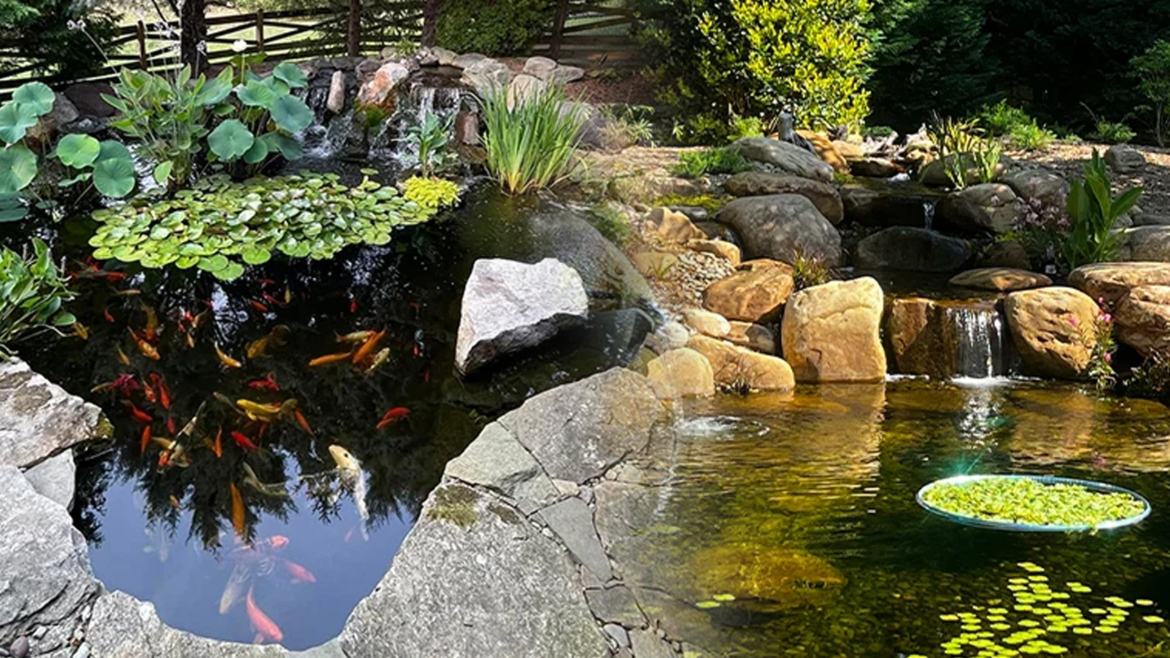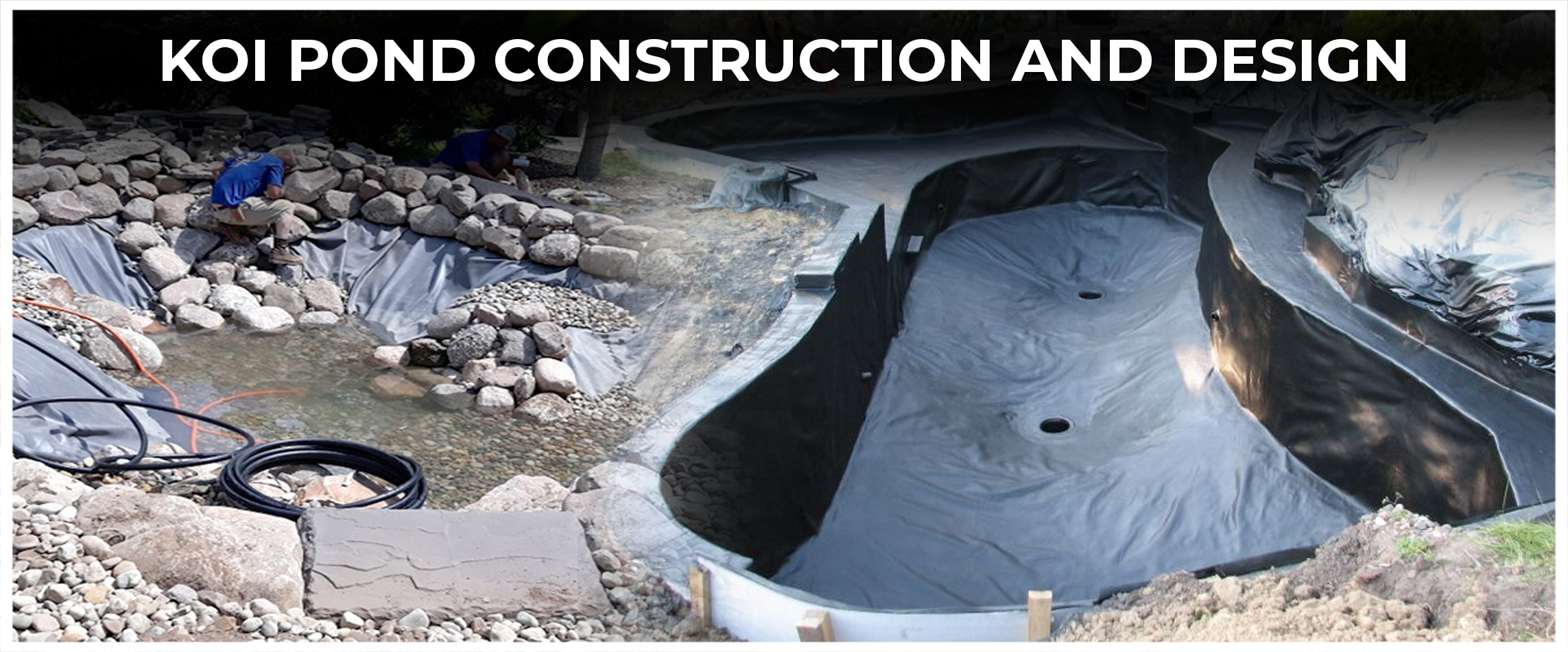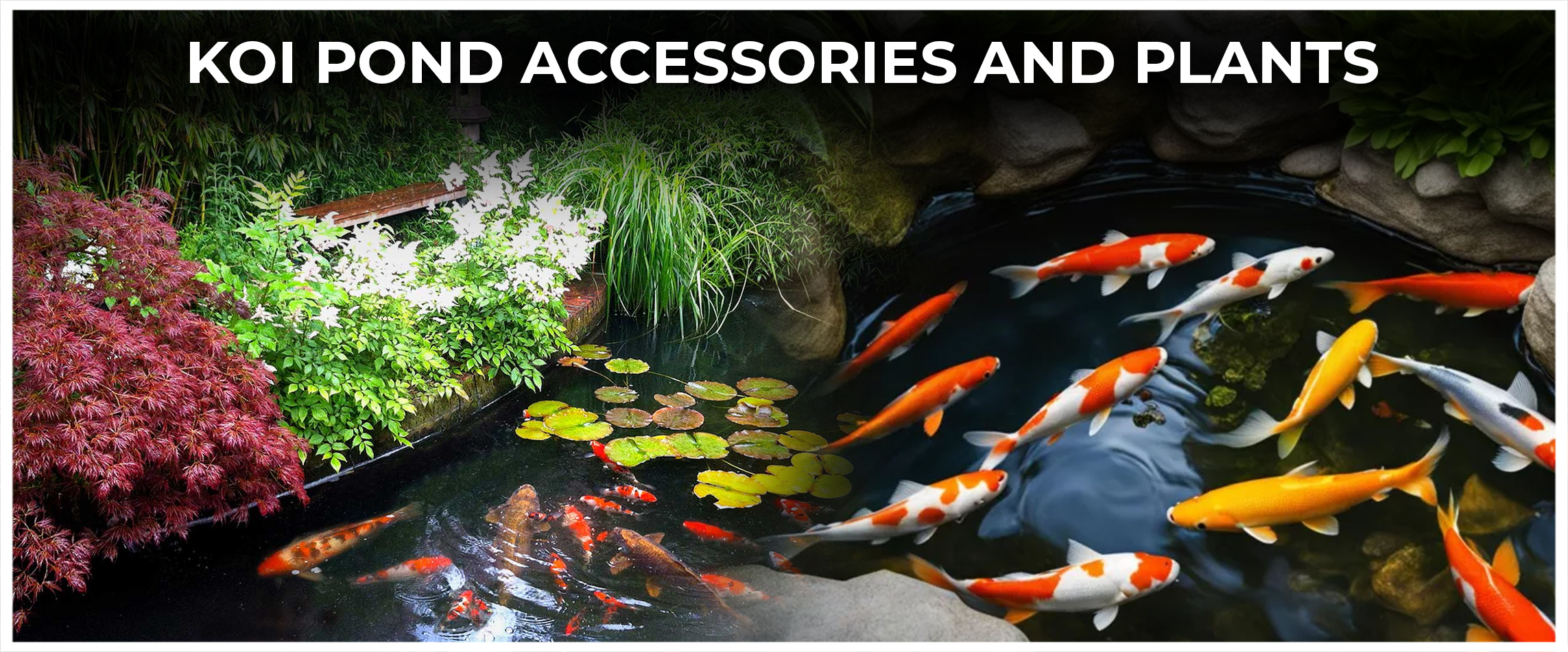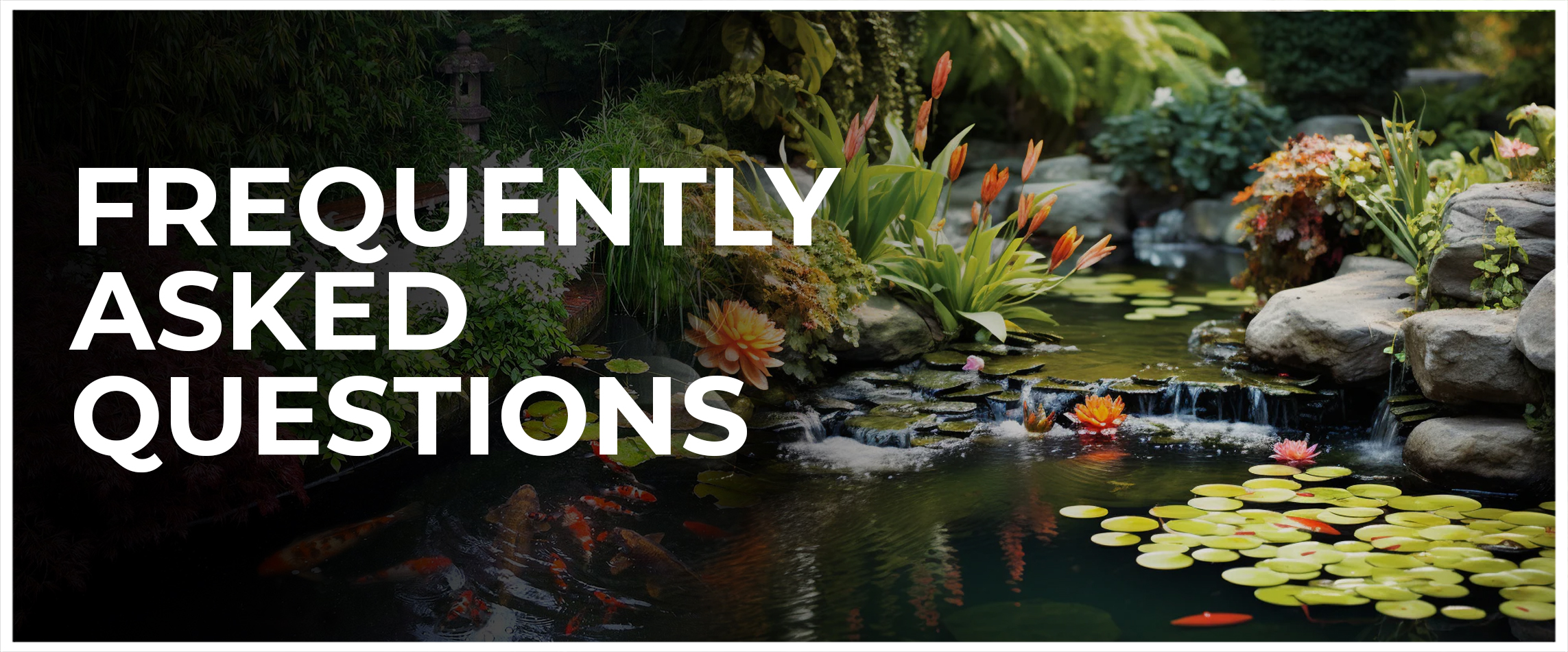Koi ponds are not just decorative water elements; they are carefully designed ecosystems that demand expert knowledge of many factors to provide the fish with the best possible conditions.
From the initiation of construction to the daily maintenance of a koi pond, applying water quality management science becomes crucial for a healthy aquatic ecosystem.
This blog unravels the fascinating science that underpins the creation, maintenance, and flourishing of a Koi pond.
Koi Pond Construction and Design
The winning koi pond design, structure, and construction begin with diligent attention to detail. It encompasses using resilient materials, correct sizing, and effective sitting. Hail-quality koi pond liners are essential to avoid leaks and give the pond a good lifespan.
Koi health requires sufficient oxygen exchange and harmony in the environment; adequate depth and surface area are necessary.
Koi Pond Water Quality
Managing good water quality is a subtle game of balance. Elements such as ammonia, nitrite, and nitrate should be watched closely.
This is the role of koi pond filters, as they are the first line of defense against pollutants.
Mechanical and biological filters work together, removing debris and breaking down toxins, contributing to a clean and clear aquatic environment.
Koi Pond Pumps and Aeration
The presence of water circulation is critical in preventing stagnation and promoting oxygenation. Ponds with pumps in strategic places drive water movement to prevent the formation of dead zones where lethal gasses may accumulate.
Air stones and diffusers facilitate oxygen diffusion, thus helping to maintain the complete health of koi fish and the pond ecosystem.
Koi Pond Maintenance
Koi pond maintenance is necessary to keep the ecosystem clean always. This activity removes unnecessary tree rubbish, decaying debris, and excess algae.
Algae management in a koi pond is a continuous challenge as a result of this multifaceted approach that involves the utilization of a UV clarifier and algaecide in addition to the promotion of a balanced ecosystem by the introduction of adequate pond plants.
Koi Fish Care
Beyond the technical aspects, understanding koi fish care is fundamental to a successful pond. Proper nutrition, disease prevention, and a stress-free environment are critical components.
Monitoring koi health and disease requires vigilance, and early intervention can be the key to preventing outbreaks that could jeopardize the entire population.
Koi Pond Accessories and Plants
Enhancing the aesthetic appeal of the koi pond involves thoughtful incorporation of accessories and plants.
Lighting, waterfalls, and carefully selected flora contribute to the overall ambiance. Pond plants, such as lilies and submerged varieties, not only add beauty but also serve functional roles by absorbing excess nutrients and providing natural shade.
Winterizing Koi Ponds
As the seasons change, winterizing koi ponds becomes essential. It protects the koi from harsh weather conditions and prevents the pond from freezing solid.
Floating de-icers and insulating materials are instrumental in ensuring the survival of the fish and preserving the integrity of the pond structure.
DIY Koi Pond
For the adventurous, embarking on a DIY koi pond project is exciting. However, success requires a comprehensive understanding of the science behind pond ecosystems.
From selecting appropriate materials to implementing effective filtration, a DIY koi pond demands meticulous planning and execution.
Koi Pond Water Quality: Beyond the Basics
Koi pond water quality management is a continuous process that extends beyond the foundational elements of construction and filtration. Understanding the intricacies of water parameters is essential for maintaining an environment where koi can thrive.
Testing kits for pH, hardness, and temperature are indispensable tools for every pond owner. These measurements guide adjustments and help prevent potential imbalances that could compromise the well-being of the fish.
Koi Pond Aeration: An Unseen Necessity
Aeration, often underestimated, is a silent hero in koi pond water quality management. Beyond promoting oxygen exchange, aeration prevents the stratification of water layers, ensuring a consistent distribution of temperature and dissolved gasses.
It also aids in nutrient circulation, reducing the likelihood of algae blooms. Strategically positioned Koi pond aeration devices contribute to the overall stability of the ecosystem, enhancing both water quality and fish health.
Koi Pond Lighting: Balancing Aesthetics and Functionality
The role of lighting in a koi pond goes beyond mere aesthetics. Properly designed lighting systems contribute to the overall health of the pond.
Well-lit areas discourage excessive algae growth while providing koi a natural day-night cycle.
LED lights, specifically designed for underwater use, are energy-efficient and can add a mesmerizing visual dimension to the pond.
Koi Pond Health and Disease: Proactive Measures
Preventing and managing koi health issues requires a proactive approach. Regular health checks, quarantine procedures for new additions, and vaccination protocols are critical components.
Recognizing the early signs of common diseases, such as parasites or bacterial infections, enables swift intervention.
Understanding koi fish’s immune system is critical to creating an environment that minimizes stress and enhances their natural ability to resist diseases.
Koi Pond Ecosystem Dynamics: Nature at Work
A thriving koi pond is more than just a containment for fish; it is a dynamic ecosystem. It introduces beneficial bacteria, such as those found in specially formulated pond additives, and aids in breaking organic matter.
This natural process contributes to water clarity and reduces the load on filtration systems. Balancing the ecosystem also involves carefully considering the types and quantities of plants present, creating a symbiotic relationship that benefits both flora and fauna.
Koi Pond Accessories: Functional and Aesthetic Accents
From skimmers to waterfalls, koi pond accessories serve functional and aesthetic purposes. Skimmers remove debris from the water’s surface, preventing it from sinking and decomposing at the bottom.
Waterfalls enhance aeration while providing a visually pleasing element. Selecting accessories that complement the overall design while serving practical functions adds more sophistication to the pond.
The DIY Koi Pond Challenge: A Rewarding Endeavor
For those considering a DIY koi pond project, the journey is as rewarding as the destination. A comprehensive understanding of the science behind koi pond water quality management is paramount.
Careful consideration of pond size, location, and the selection of appropriate materials are essential prerequisites. While the DIY route offers creative freedom, it demands a commitment to ongoing learning and adaptability to ensure long-term success.
Frequently Asked Questions
How often should I test the water quality in my koi pond?
Regular water quality testing is crucial for maintaining a healthy koi pond. Aim to test the water parameters, including pH, hardness, and temperature, at least once a week, especially during the warmer months.
However, in times of environmental changes or if you notice any unusual behavior in the koi, it’s advisable to test more frequently. Keeping a close eye on water quality helps prevent imbalances and ensures a thriving aquatic environment.
What is the importance of aeration in a koi pond?
Aeration is vital for your koi’s well-being and the pond ecosystem’s overall health. Aeration devices, such as air stones or diffusers, promote oxygen exchange, prevent stratification of water layers, and assist in nutrient circulation.
Proper aeration reduces the risk of algae blooms, enhances water clarity, and ensures consistent temperature and dissolved gas distribution. It’s an unseen yet essential component in maintaining a stable and thriving koi pond environment.
Final Words
At the point where science, art, and dedication converge, koi pond waters become a living artwork in which koi fish thrive.
Beyond the primary responsibilities of construction and filtration, testing, aeration, and health maintenance set koi ponds apart as carefully managed ecosystems.
To maintain the long life of koi in your pond and to preserve the aesthetic appeal of the aquatic ecosystem, all enthusiasts need to appreciate the complexity of pond management.
Whether it’s the intricate design of a homemade project or the unceasing improvements made to an existing pond, the science of managing koi pond water quality is still a fascinating and ongoing journey.
